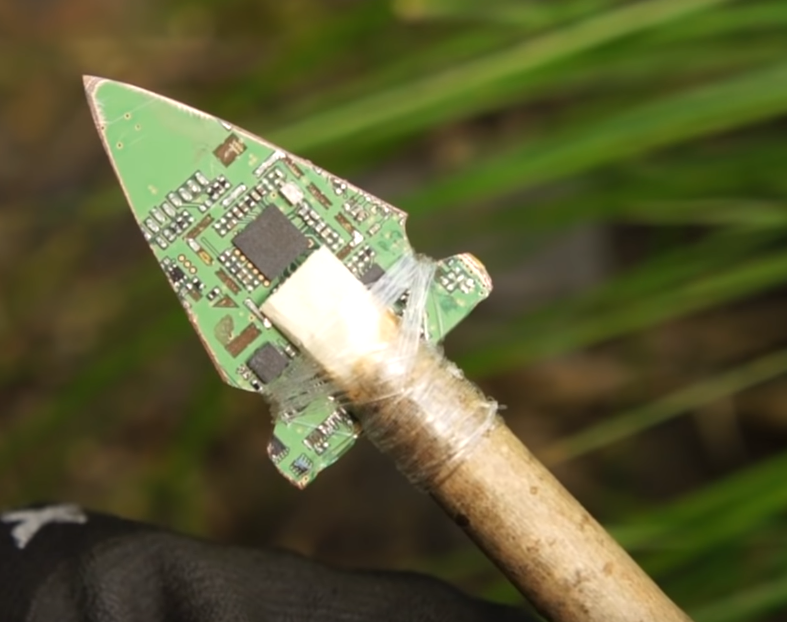I just need to preserve some old data that I have on my computers, so I was wondering what would be the best way to archive stuff long term.
Blu-ray disks ? Multiple HDDs ? What do you guys suggest ?
Self hosting principals aside, is this data actually important? If so, then don’t fuck around with self hosting it. Are you looking for lowest cost? Then don’t waste a bunch of money spinning your own disks.
Amazon glacier to guarantee availability and your own encryption to guarantee privacy.
It’s currently running me about $4/month for around 10tb that I don’t want to lose but just don’t want to deal with. An equivalent HDD solution would be around $500, that’s 10 years to break even assuming zero disk failures and zero personal maintenance time.
Plus it’s guaranteed. Inherent multiple copies, has SLA, and there’s no worry about the service just disappearing. It’s they decide to shut down or raise prices or whatever, you can reevaluate and move.
Edit: Glacier and similar services are meant for archival which is the term OP used. You never expect to need it again, but can’t get rid of it. Retrieval cost is mostly irrelevant, but yes much more expensive. (I’d wager still less expensive than a home RAID array.)
What would it cost to retrieve though? You probably still have the appropriate cost-effective solution but it’s an important consideration for newcomers to have complete math.
Retrieving from S3 glacier is approximately
10 times the monthly cost of storing the data100 times actually. Didn’t realize retrieval from Glacier isn’t actually downloading it onto your local, but rather just moving it into a frequent access tier S3 bucket from which you can then download, and this download is the expensive part.OP said “archive”, not “backup”. Glacier is for days you need to keep but rarely touch.
How is it to get the data back?
Can I do it in real time so I could mount it as a media storage or would I need to rent one of the faster S3 tiers?I think you can technically do it, but it’s expensive to retrieve. But that isn’t the point of an archive.
So instead of “fucking around” with putting it on a long lasting storage device to keep in a wardrobe, he should give up control of the data, hand it to a company and risk forgetting to inform them about an adress change, so everything is lost, when the bills arent paid?
How is that more secure?
Guess it depends on how much you trust that Amazon is going to steal your data instead of doing the thing you’re paying them for, vs a house fire or media failure or whatever.
There’s also pretty clear rules about unpaid bills, the data doesn’t just vaporize.
This is what we call a “risk assessment”, and imo if I must have that data available long-term, then a single copy on DVDs in a closet isn’t good enough.
I’d argue for most consumer use cases having one or better two physical back ups is more reliable, because it is simple and straightforward. Also the risk mitigation is already in place, as you wouldn’t want your place to burn down either way.
deleted by creator
Are you sure it’s $4/month and not $40/month? If so, which region is this in?
Us-East. Look specifically at glacier, which is long term, near free to store, expensive to remove.
Is it Glacier Deep Archive? I just realized I was looking at the Glacier flexible retrieval prices earlier. US-East lists it as $0.00099/GB (about $1/TB), which is still higher than what you’re getting.
Last months bill for my entire Amazon account was $4.72. most of that was the glacier storage.
It’s they decide to shut down or raise prices or whatever, you can reevaluate and move.
Move at how many hundred $ per TB?
Still less than an equivalent RAID array. Particularly if you consider that archives are very rarely extracted as a complete bulk, vs pulling the specific records needed.
encode your data into the dna of an alien world so that it lasts for all time.
Even better, so it mutates into superior data!
Depends how important the data is, how long is long term and how budget is budget, but assuming you don’t want to risk losing anything, backup best practice is the 321 rule
3 copies 2 different media 1 off-site
I’d almost always say a cloud provider for your off-site backup, but if you don’t want to do that, it depends how much you want to spend.
There’s no guaranteed do-it-once-and-you’re-done approach here, as all data can degrade. For instance if one of your backup media is hard disks, you’re probably going to want it setup in at least RAID 5 and you want to be on top of swapping out disks when they fail. If you’re thinking of the Blu-ray or tape approach, you’re going to want to periodically check that the media hasn’t degraded. You’ll probably also want to plan to replace the backup media every half decade or so to be extra safe (e.g. BD-Rs have a lifespan of 5-10 years).
Removed by mod
Buy used HDDs and configure RAID arrays.
You can get like 32TB of cheap basically ready to fail HDDs and listen to them click away for dirt cheap. I mean like a couple hundred bucks.
Buy some old tower PCs from a school or something. Low specs are fine.
Install Ubuntu server, set up samba and minidlna set up tunnel with cloudflare. Boom.
You could set this up for like $500. I have a setup like this. My HDD has been clicking since install. 2 years strong. I have two backup 16TB HDDs ready to hot swap should either of them fail. Having those backups on hand brings your cost up to about $800, but again, this is for two 16TB HDDs in a RAID config. If you did like 8TB instead, this is all probably $500 with backups.
Western Digital has a bargain bin.
P.S. y’all have valid concerns about RAID5, I’m no expert so I mirror the whole of it to another 16tb USB HDD I got for anfew hundred bucks.
It’s basically everything but flood/fire proof. The odds of my RAID config failing such that It is irrecoverable is low, but the odds my USB HDD fails at the same time is inconceivable! This USB HDD is attached to my main workstation hub, when I log in to windows (shut up I dual boot for development ya dinguses) and my machine is idle for 20 mins, it performs a sync between my network area storage (my ghetto RAID server) and the USB HDD.
It’s low cost and fool proof, and kinda beefy. If I upgrade the tower to something modern…? Add 1TB of SSD to everything? Dude… I’ll be rocking a rad setup for under 1500.
Just use raid6 instead of raid5 as ready to die disks could die simultaneously
I once lost a RAID6 to a faulty power distributor in a server cause (lost 5 out of 12 disks). RAID is not a backup.
But 1 disk failing and the array braking aint either.
This is about real time data not backup which should at best happen daily or bi-daily for really important data.
After my experience with raid5 and the WD Green 2TB drives that were so fragile that the vibrations of 6 drives in the same case is enough to kill them resulting in 2 drives dying at same time wiping out my entire media collection…yeah, use raid6, with another server holding a raid6 array as continuous backup.
Read the data spec for how many in an array?
Literally the reason for WD RED NAS and NAS Pro (beyond some other tech specs).I bought these before the red drives even existed.
Not a reason to not read the data spec.
If they not mention it there, it can be expected to run it in a single bay environment and not in an array environment.These drives had a high failure rate whether they were in a raid array or just on their own. I get that they weren’t designed for raid, but just using them in an array didn’t cause them to fail.
Do you have a link to WD or other sites selling old HDD’s?
If you are ready to do some reading I’d recommend ZFS over traditional raid. ZFS makes more guarantees then traditional about file integrity over time.
Multiple HDD’s and a recurring monthly task to check their health.
If you have enough data: Tapes. Tapes are so hilariously cheap to keep. Write them and keep them in a fire proof box. No power needed to keep platters spinning. 45TB/tape!
Personally I consider a tape only a valid solution in the 100+TB range. (At least cost wise) Unless you happen to have a tape drive already at your disposal…
I have never used tapes, but I want to use it if it’s viable. I only have about 3TB of data currently.
Tapes only make financial sense if you’re in the hundreds of TB.
Would probably help to know for how long, how much capacity do you need and what budget. Should also be stated external factors play a massive factor on how long a storage device can survive like enviroment, humidity and heat being the biggies
Edit in case I fall asleep: for the budget I usually would go with an external ssd just refresh the data every year or 2 it should be ok for 8ish years maybe even 10. For a write it and forget it method you’ll want m-disc instead which are more expensive but if properly stored will last lifetimes so the failure point will be a usuable drive that can read it. If you decide to go the spinning mechanical drive route make sure to buy 2 (a backup for the backup) since they are a lot more fragile. Gold plated dvds/cds are also another write and forget option but have less capacity than m-discs
A couple different threat models to consider, hardware failure vs human failure. Things like RAID can effectively cover the hardware failure side and be fully transparent. Human failure is a bit more tricky. There are a number of old expressions about backups but one that’s good to keep in mind is snapshots are not backups. They’re convenient and easy to automate but if the system making them goes kerplooie they’re pretty useless.
A tiered version is good for off device backup, using diff backups routinely to only copy the new or changed data with a periodic full backup.
Cold disks are great but make sure to test them periodically, nothing worse than looking to restore a chunk of data only to find the backup can’t be read.
Things like RAID can effectively cover the hardware failure side
Note that RAID only covers one specific hardware failure. To the point where IMHO, you cannot consider it a data security measure, only a data availability one.
Curious what you mean here. Aside from RAID0 all tiers allow for at least one disk to fail without loss. If the whole raid controller fails you can typically replace that independently and import the foreign config. This is all talking about hardware backed RAID of course, not a soft-raid config.
There are much worse ways for a RAID controller to fail than suddenly not doing anything. What if it doesn’t notice it has failed and continues to write to a subset of devices only? Great recipe for data corruption right there.
Bad RAID controller/HBA, CPU, RAM, Motherboard, PSU are all hardware failures that RAID does very little (if anything) to mitigate. One localised incident in any of them out could make all of your drives turn into magic smoke or bits go bad.
You cannot rely on that sort of setup for data security. It only really mitigates one relatively common hardware to push storage system uptime above 99.9%. That has a place in some scenarios where storage “only” being 99.9% available has a significant impact on total availability but you’d first have to demonstrate that that is the case.
Fair enough if using a more expansive version of hardware failure. Things like a house fire would presumably destroy a series of optical disks which would make most any in house option non-functional. Network based backups could also fail to transmit data securely and accurately as well so really any sort of replication solution needs validation of the data is of significant value. A first step in preservation is to not have the box that it came from burn down, and have a way to recover if someone does a ‘sudo rm -rf /’ accidentally.
Things like a house fire would presumably destroy a series of optical disks which would make most any in house option non-functional.
Well, it makes any option that only uses a single location non-functional. Having two copies at home and one at a distant location (as recommended by the 3-2-1 backup rule of thumb) mitigates this issue.
Network based backups could also fail to transmit data securely and accurately as well
Absolutely. Though the network is usually assumed to be unreliable from the get-go, so mitigations usually already exist here (E2EE, checksums, ECC).
really any sort of replication solution needs validation of the data is of significant value
Absolutely correct. An untested backup is probably better than nothing but most definitely worse than a tested backup.
and have a way to recover if someone does a ‘sudo rm -rf /’ accidentally.
Certainly something that must be mitigated but this is getting out of “hardware failure” territory now ;)
CDs degrade over time and so aren’t the best way to archive data if you know you will need it again. If it’s just an ‘in case’ then it may be ok. Best bet is to buy a USB disk and then keep a second copy of it offsite. Also best practice to not use two of the same manufacturer drive.
How much data? The answer will differ if it’s a few megs of text vs a terabyte of videos.
Multiple methods, not really important which ones. I use an external hard drive plus I email zip files to myself.
I use multiple offline HDDs with a policy to keep n copies between them because it’s by far the cheapest way to still own the data. It requires regular checks because HDDs are likely to fail after a decade or so and a bunch of HDDs are a pain to manage, so you will need tooling for this. I use git-annex for this purpose but it’s not particularly user-friendly.
I use m discs. It’s like a kind of high quality Blu-ray and should last thousands of years. I think your burner must support it though.
I don’t know about your budget, but I’d do it onto HDDs. They’re cheap and large. But use two and regularly check them like every other month or so. If one breaks, get a replacement. That’s the most simple (if you have an external dock) and cheap solution that you OWN.
Also copy it at least twice onto each in case of corruption. Also use a copier that verifies (fastcopy, teracopy etc)











